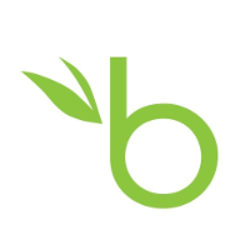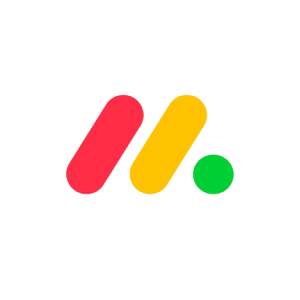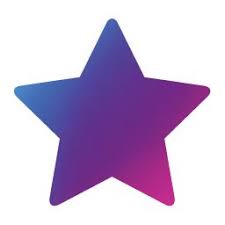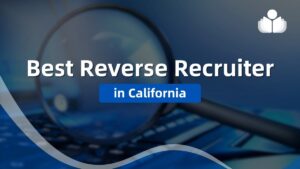To screen a job applicant, an HR manager has to look carefully through a resume to confirm whether the experiences and skills listed meet the job requirements. When businesses receive hundreds of resumes, dozens of hours can be wasted going through them.
To fight this problem, many businesses are now using applicant tracking systems to automate hiring and significantly reduce cost-per-hire.
This article will detail what an applicant tracking system is, how it works, and how to get your resume past one as a job applicant.
What Are Applicant Tracking Systems?
An applicant tracking system streamlines the hiring process for a vacancy. This software screens job applications and ranks candidates based on experience and skill.
ATS software eases recruiting efforts for companies, especially for those with multiple vacancies that receive thousands of applications. From job postings to ranking applicants and scheduling interviews, applicant tracking systems are used at every hiring stage to minimize time spent on each resume.
These days, when someone submits an application online, there’s a high chance that it’s going to pass through an ATS before getting to a hiring manager. Over 90% of businesses use tracking systems to automate hiring.
For businesses, the best applicant tracking systems save money and time, and present only the best candidates to HR managers. For individuals, an ATS is another hurdle to jump before they can get a serious consideration from a company.
Why Do Businesses Use Applicant Tracking Systems?
Businesses implement tracking software in their hiring process for many reasons, including to:
- Customize and automate the hiring process
- Filter out spam and duplicate applications
- Rank candidates in a searchable database
- Save time and money
To Customize and Automate the Hiring Process
Businesses have custom hiring flows for different openings. For example, the hiring processes for a marketing manager may be different for a software engineer.
ATS software allows HR teams to create customized recruitment steps for different job openings and automatically track candidates as they move along the recruiting process. For instance, once a software engineer’s resume has been ranked, the HR manager can auto send an email to schedule an interview.
To Filter Out Spam and Duplicate Applications
Many applicants online play the numbers game—send as many applications as possible and hope for one positive response. This means that hiring managers have to deal with lots of irrelevant spam and duplicate applications.
Applicant tracking systems have algorithms that filter out duplicate applications and rank spam applications low.
To Rank Candidates in a Searchable Database
When someone applies online, the ATS automatically creates a candidate profile, parses the applicant’s data, and adds that information to the profile. Hiring personnel can then search the database for resumes containing relevant keywords or for highly ranked applicants.
To Save Time and Money
A tracking software saves hiring managers extra hours of looking through resumes and organizing them. By reducing the amount of time spent on applications, businesses can direct their capital to onboarding the right talents.
How Do Applicant Tracking Systems Work?
The most basic task of an applicant tracking system is to auto-read a resume and score an applicant. When an applicant submits a resume through an ATS like BambooHR, the resume is parsed into plain text, scored, and added to a digital profile.
An ATS software typically searches for keywords indicating that an individual may be qualified for a job. For instance, when hiring for the position of digital marketing manager, the employer is interested in keywords like “marketing strategy,” “digital marketing,” “search engine optimization,” “social media,” etc. An applicant’s resume that doesn’t include relevant keywords is scored low.
Recruiters search for qualified candidates by looking for relevant keywords in the database. When they search for “SEO,” for example, the tracking software pulls up all applicants who included this term in their resumes.
Employers set other parameters for applicant scoring. For instance, an employer may include a yes-no question to filter out inexperienced applicants. They may ask, “Do you have up to 2 years of experience?” or “Are you legally qualified to work in the U.S.?” When an applicant answers “No” to such questions, they’re automatically removed from the hiring process and auto-sent a rejection email.
ATS systems analyze the listed skills of an individual or the work experiences they’ve had. Modern applicant trackers implement artificial intelligence and natural language processing to improve accuracy.
How Accurate Is an Applicant Tracking System?
ATS software focuses on how a candidate’s listed skills and experiences match job descriptions. Over 80% of employers believe ATS inadvertently remove highly-skilled job seekers. This shows that ATSs are not entirely accurate.
Even though tracking software can filter out skilled applicants, employers are still willing to use it instead of manually sorting through resumes. The majority of recruiters find that application tracking systems speed up talent acquisition. Losing a few good talents to gain many others and maximize efficiency seems a fair price to pay.
How To Get Your Resume Past an ATS Software
Many applicants create sleek and visually enticing resumes that are designed to draw in a recruiter. However, hiring managers often never see those resumes unless it meets specific criteria.
The most important factor in getting past a tracking software is to make sure it can correctly parse your resume. Applicant trackers read from left to right, top to bottom. We recommend that you use the chronological or hybrid resume formats. These list your work experiences in a way that an applicant tracking software can easily read.
Many candidates are discouraged when they see the list of requirements and skills in job descriptions. Nevertheless, make sure to include the major relevant keywords in your resume. At this stage, your resume is for the ATS and not for a human recruiter.
Include keywords wherever you can—in your career description, past job titles, and listed skills. Use both the long-form and acronyms of relevant keywords, and common headings. For instance, use “work experience” not “what I have done,” “skills” not “what I can do,” and “recommendations” or “references” not “who to contact.” Inserting tables or images may cause resume parsing errors.
Submit your resume in the best file format. We recommend using DOCX and PDFs. PDFs have the advantage of preserving formatting but older tracking software cannot properly read PDFs.
5 Best ATS Software for Businesses
Here are five of the top applicant tracking systems for businesses.
Pinpoint is a relatively new ATS software ideal for companies that don’t want to outsource hiring needs to a recruitment agency. Pinpoint is designed to be easy for company personnel to advertise openings, source employees, and fill talent acquisition pipelines.
Pinpoint lets you create custom career sites that enforce employer branding. It automatically creates candidate profiles and ranks applicants based on who matches the job description. A talent acquisition team can also collaborate to hire the right employees.
The app has a Chrome extension that lets you source top hires for talent acquisition. You can send templated emails, schedule video interviews, see employee referrals, and pull custom reports with Pinpoint.
A great advantage is the well-designed UI. The dashboard shows you how many total applications there are for jobs and makes it easy for you to review them. Qualified candidates can apply when there is no vacancy, so you store applicant information for when there is an opening. Pinpoint starts from $600 per month.
- Fixed monthly fees.
- Custom reports and recruiting analytics.
- Unlimited active jobs.
- Connects with many job boards.
- No mobile app.
iCIMS Talent Cloud is a dominant ATS in the industry. For organizations with over a thousand employees and staffing agencies, iCIMS seems the best software for applicant tracking.
iCIMS is a cloud-based applicant tracking system that streamlines recruitment processes from job postings to making an offer. The tracking software integrates smoothly with a company’s career page and popular platforms like Indeed, LinkedIn Jobs, Monster, and Zip Recruiter. It can even integrate with other ATS software like BambooHR.
The ATS system adds a profile page for each applicant and parses every file they attach. Recruiters easily create custom hiring workflows, search for candidates, create a human resource information system, and pull data reports. The software has add-ons that make the recruiting process engaging for candidates and also a feature for social media posting.
iCIMS has a well-laid-out UI, but it can be a little overwhelming for new users. The number of features available may be too much for HR professionals who want to keep it simple. iCIMS has a mobile app that works for both Android and iOS.
- Allows profiles and custom workflows.
- Creates customizable recruiting data reports.
- Has Text Engagement for a better candidate experience.
- Pricey.
- Add-ons cost extra.
BambooHR is not only for applicant tracking but for the entire life cycle of existing employees. From onboarding to offboarding, BambooHR helps you analyze employee engagement and pull talent acquisition reports.
BambooHR integrates with popular job boards like Indeed, Glassdoor, and LinkedIn jobs. It provides you with a database of applicants and ranks them on how they match your job descriptions. Hiring managers can then search this database to select which applicants move on to the next stage in the recruitment process.
The software makes it easy for you to send templated emails to applicants and schedule discovery meetings. Employees can track their time with the PM software and create reports of their own. You can even work payroll taxes with BambooHR. The app manages human resources for both full-time and contract employees.
With BambooHR, you can work as a talent acquisition team and use employee referrals. By granting permissions, you give different team members access to candidates’ job applications, allowing them to advise on the hiring process. BambooHR has a mobile app for both Android and iOS devices.
- Cheaper than other systems.
- Tracks an entire employee lifecycle.
- Great for talent management.
- Not many applicant-engaging features.
monday.com is known for project management, but it also offers an applicant tracking system software. It helps you post jobs to popular platforms and your website’s career page.
To track applicants with monday.com, you have to create a dedicated board. There is a board template to customize, and you can even develop your own hiring flows.
Users can create an application form with a shareable link. You can then add the link to your website career page or job boards. Once an applicant fills the form, their details get added to the hiring board.
From this board, managers have an overview of the applicants who matched the job description and can decide who moves forward in the recruitment process. Since monday.com integrates with Gmail, you can automatically send acceptance or rejection emails to candidates.
Apart from hiring, monday.com is used for team collaboration and employee management. monday.com charges $8 monthly per user, and has no special pricing for applicant tracking.
Read: The Ultimate monday.com Review – Pricing, Features & More
- Removes the need to buy special tracking software.
- Easy to view applicants and their documentation.
- Does not rank candidates.
- Not optimal for a large number of applications.
JazzHR is designed for companies with less than 500 employees. The software offers custom career pages and integrates with several job boards in the market to make talent acquisition easy.
With JazzHR, you can group applicants, rank their skills and experience, and move them along the hiring stages. You can create custom workflows for every job opening and collaborate with a hiring team.
JazzHR integrates with hundreds of apps including Microsoft Outlook and Gsuite for scheduling interviews, Bob and Gusto for doing payroll taxes, and PeopleG2 for running background checks. It also integrates with tracking software like BambooHR.
Publish job openings on several job boards at once with just one click. You can also work with third-party apps to run candidate skills assessments.
JazzHR has different pricing models from $39 to $359 per month.
- Affordable for small to medium sized businesses.
- Has features of enterprise ATS software vendors like iCIMS.
- No applicant tracking for the lowest pricing tier.
Pros and Cons of Using an Applicant Tracking System in HR
Let’s look at the for and against of using the right ATS system for hiring.
ATS Pros
- Streamlines the recruitment process
- Ranks applicants by comparing their resumes to the job description
- Reduces cost-per-hire and increases recruiter productivity
- Filters out spam applications
- Creates candidate profiles
- Makes resumes searchable
- Helps in interview scheduling and candidate communications
- Automates recruitment marketing and job posting
ATS Cons
- May filter out skilled applicants
- Cannot parse complexly designed resumes
Frequently Asked Questions (FAQs) for Applicant Tracking Systems
Bottom Line on Applicant Tracking Systems
Applicant tracking systems are here to stay. Hiring teams minimize cost-per-hire when they set up a tracking system for talent acquisition and create customizable job reqs. Applicants craft more relevant resumes when they write with ATS software in mind. Maximize efficiency in your business by implementing an applicant tracking system—and transform the way you handle recruiting.
 Sections of this topic
Sections of this topic



















